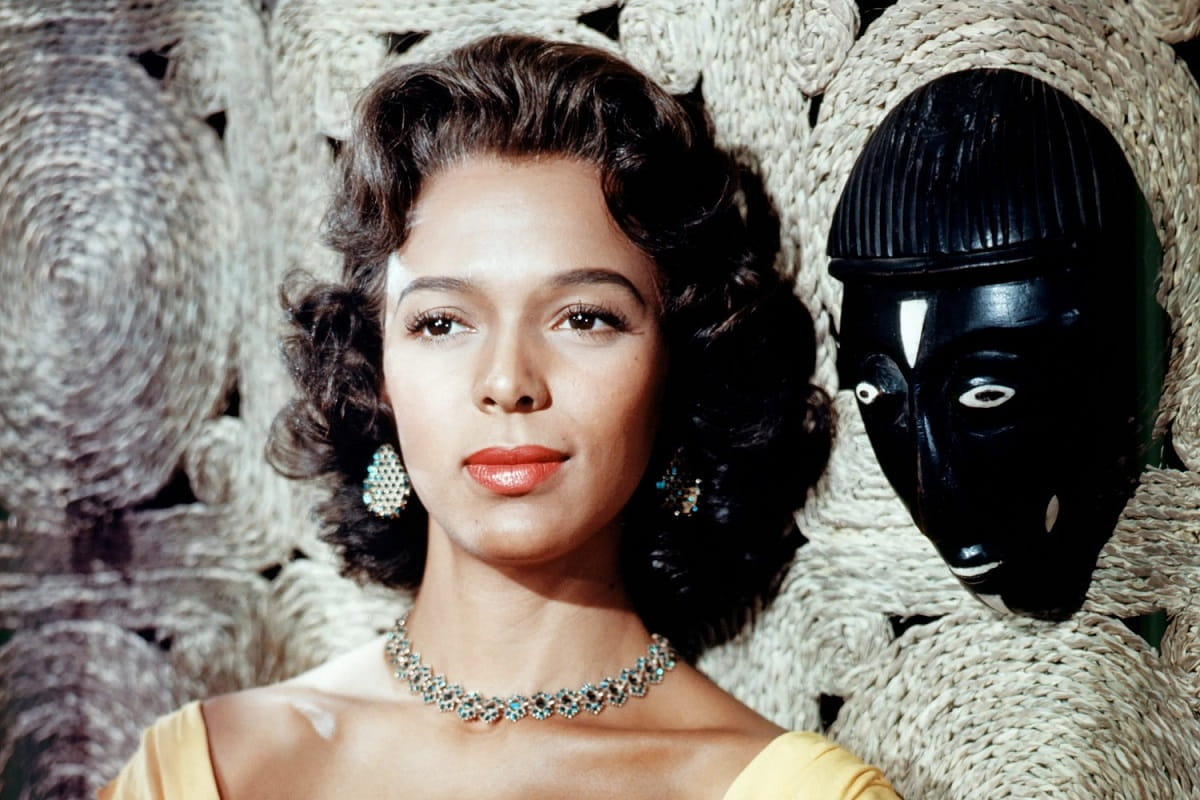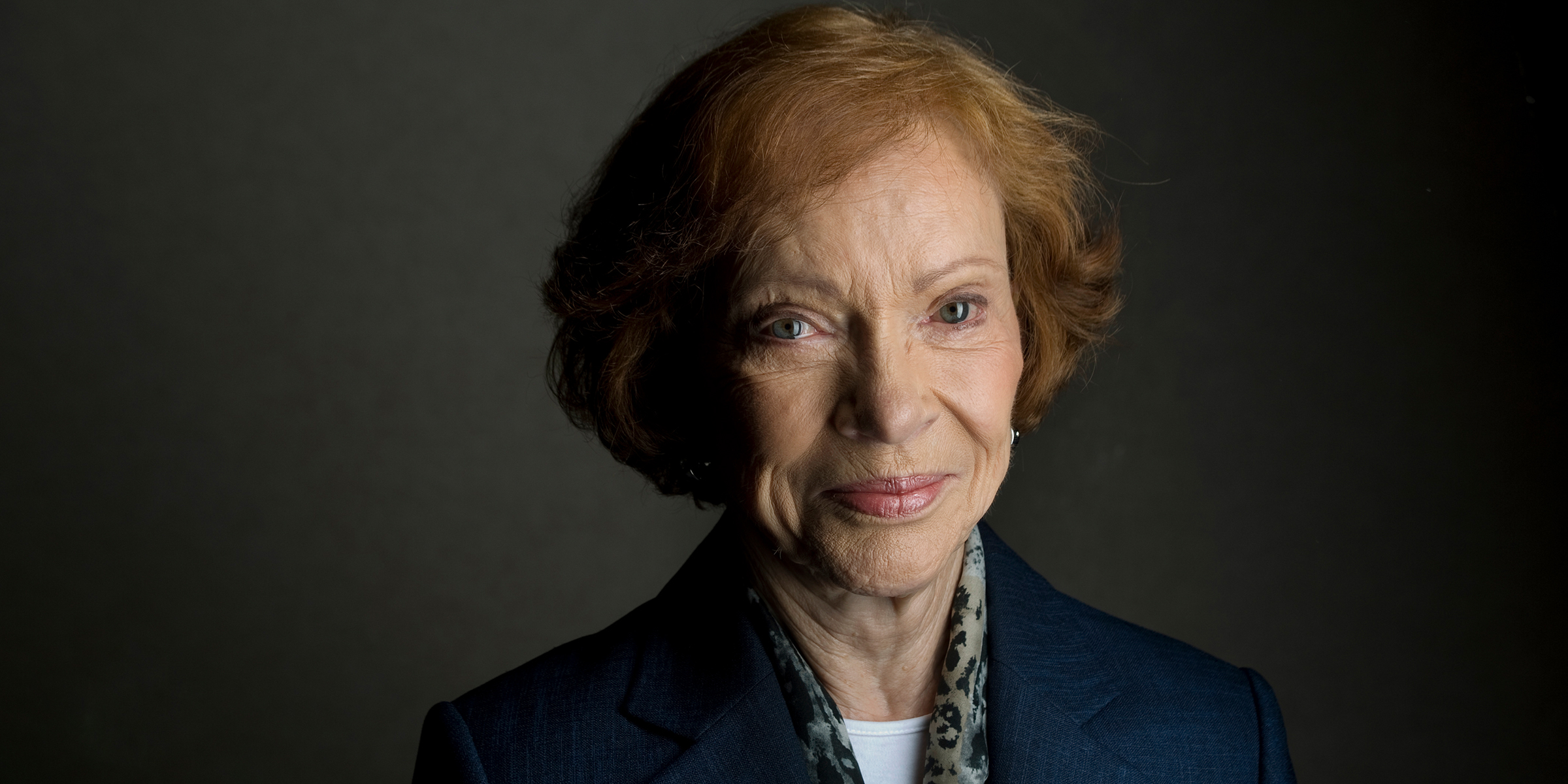Harolyn Suzanne Nicholas: Unveiling A Tragic Legacy
The name Harolyn Suzanne Nicholas might not immediately resonate with everyone, but her life story is inextricably linked to one of Hollywood's most iconic figures, Dorothy Dandridge. Born into the dazzling, yet often tumultuous, world of entertainment, Harolyn's existence was marked by profound challenges from her very first breath, casting a long, poignant shadow over the life of her famous mother. This article delves into the rarely told narrative of Harolyn Suzanne Nicholas, the only daughter of legendary actress Dorothy Dandridge and dancer Harold Nicholas, exploring the circumstances of her birth, her lifelong struggles, and the enduring impact she had on her mother's complex legacy.
Harolyn's journey was one of silent endurance, a testament to the unforeseen adversities that can strike even those seemingly destined for greatness. Her story is a crucial, albeit heartbreaking, piece of the puzzle that defines Dorothy Dandridge's life—a narrative of immense talent intertwined with personal heartbreak. By examining Harolyn's life, we gain a deeper understanding not only of her individual plight but also of the societal challenges faced by families dealing with severe disabilities in the mid-20th century, and the immense pressure placed upon public figures navigating private pain.
Table of Contents
- The Life of Harolyn Suzanne Nicholas: A Biographical Overview
- The Tragic Dawn: Birth and Early Challenges
- Dorothy Dandridge's Burden: Motherhood Amidst Stardom
- A Ward of the State: Harolyn's Institutional Life
- The Silent Struggle: Harolyn's Lifelong Impairments
- The End of a Challenging Journey: Harolyn's Passing
- The Enduring Shadow: Harolyn's Impact on Dorothy Dandridge's Legacy
- Beyond the Tragedy: Lessons from Harolyn Suzanne Nicholas's Story
The Life of Harolyn Suzanne Nicholas: A Biographical Overview
Harolyn Suzanne Nicholas, often referred to as "Lynn," entered the world on September 2, 1943, in Los Angeles, California. She was the only child born to the celebrated dancer Harold Nicholas and the iconic actress, singer, and dancer Dorothy Dandridge. Their union, which began with a meeting at the famed Cotton Club in Harlem in 1938 and culminated in marriage on September 6, 1942, was one of high hopes and public fascination. However, the joy of their new family was tragically overshadowed by the circumstances of Harolyn's birth.
From the moment of her arrival, Harolyn Suzanne Nicholas faced an uphill battle. Born with severe brain damage, specifically cerebral anoxia—a condition caused by a lack of oxygen to the brain during birth—she was immediately confronted with profound developmental delays and cognitive impairments. This devastating start to life meant that Harolyn would never experience the world in the way most do; she was unable to speak, communicate effectively, or even acknowledge her parents. Her condition rendered her dependent on others for all aspects of her care throughout her entire life. This biographical overview serves as a gateway to understanding the depth of her struggle and the immense impact it had on those around her, particularly her mother, Dorothy Dandridge, who grappled with guilt, career pressures, and personal turmoil while trying to navigate the complexities of caring for a child with such severe needs.
Personal Data: Harolyn Suzanne Nicholas
| Attribute | Detail |
|---|---|
| Full Name | Harolyn Suzanne Nicholas |
| Date of Birth | September 2, 1943 |
| Place of Birth | Los Angeles, California, USA |
| Date of Death | 2003 |
| Age at Death | 60 years old |
| Parents | Dorothy Dandridge (Mother), Harold Nicholas (Father) |
| Known For | Only daughter of Dorothy Dandridge; lived with severe brain damage |
| Condition at Birth | Severe brain damage due to cerebral anoxia |
| Key Impairments | Speech and communication impairments, inability to care for herself |
| Custody Status | Became a ward of the state of California after parents' divorce |
The Tragic Dawn: Birth and Early Challenges
The birth of Harolyn Suzanne Nicholas on September 2, 1943, was meant to be a joyous occasion, marking the expansion of the family for rising stars Dorothy Dandridge and Harold Nicholas. Instead, it became the genesis of a lifelong struggle. Harolyn was born with severe brain damage, a direct result of cerebral anoxia—a critical lack of oxygen to her brain during the traumatic birth process. This immediate and profound injury meant that from day one, Harolyn faced insurmountable obstacles.
The consequences of cerebral anoxia were devastating and permanent. Harolyn Suzanne Nicholas was unable to develop speech or any form of verbal communication. Furthermore, the damage prevented her from recognizing or acknowledging her parents, a heartbreaking reality for any parent, let alone one as emotionally invested as Dorothy Dandridge. The developmental delays and cognitive impairments were so severe that Harolyn would never gain the capacity to care for herself, requiring constant supervision and assistance throughout her entire life. This tragic beginning set the course for Harolyn's existence, a life lived in the shadow of profound disability, and simultaneously ignited a complex and painful chapter in Dorothy Dandridge's own story.
Dorothy Dandridge's Burden: Motherhood Amidst Stardom
For Dorothy Dandridge, the birth of Harolyn Suzanne Nicholas was not just a personal tragedy; it became a defining, often debilitating, aspect of her life. As a trailblazing African American actress, singer, and dancer, Dorothy was navigating the highly competitive and often prejudiced landscape of Hollywood. Her career was on an upward trajectory, marked by groundbreaking roles and an Academy Award nomination, but her private life was fraught with immense personal problems, largely overshadowed by the profound guilt and struggle associated with Harolyn's condition. Dorothy felt a deep sense of responsibility and guilt over her daughter's brain damage, a burden that weighed heavily on her mental and emotional well-being.
The demands of her burgeoning career, coupled with the emotional and financial strain of caring for a child with severe special needs, created an almost unbearable pressure. Dorothy struggled to reconcile her public persona as a glamorous star with the private reality of her challenging motherhood. This internal conflict, exacerbated by the societal expectations placed upon women in her position, contributed significantly to her own mental health struggles and personal problems, which tragically escalated throughout her life. The narrative of Dorothy Dandridge is incomplete without acknowledging the central role Harolyn Suzanne Nicholas played as "the primary ghost" in her mother's life, a constant reminder of a private sorrow amidst public triumph.
The Strain on a Strained Union
The marriage between Dorothy Dandridge and Harold Nicholas, though seemingly glamorous from the outside, was reportedly strained from the very beginning. They met in 1938 at the legendary Cotton Club in Harlem, a hub of vibrant entertainment, and married on September 6, 1942. However, the union was plagued by infidelity on Harold's part and a reported lack of concern for Harolyn Suzanne Nicholas's condition. All that's interesting reports that Harolyn suffered brain damage at birth, and Harold's disinterest only compounded Dorothy's isolation and despair.
The immense stress of Harolyn's severe brain damage, coupled with the marital discord, proved to be an insurmountable challenge for the couple. Their divorce in 1951 (some sources indicate 1952) marked the official end of their tumultuous relationship. For Dorothy, the separation meant not only the dissolution of her marriage but also a further intensification of her sole responsibility for Harolyn, at least initially. This period was pivotal, as it led to crucial decisions regarding Harolyn's care that would forever alter the course of both their lives.
A Ward of the State: Harolyn's Institutional Life
The challenges of caring for Harolyn Suzanne Nicholas, particularly given her profound needs and Dorothy Dandridge's demanding career and increasingly precarious financial situation, eventually led to an agonizing decision. After her divorce from Harold Nicholas in 1951, Dorothy, overwhelmed by the circumstances, made the heartbreaking choice to give up her parental rights. This decision was not made lightly, but out of a desperate need to secure the best possible care for Harolyn, a level of care that Dorothy felt she could no longer provide adequately on her own. As a result, Harolyn Suzanne Nicholas became a ward of the state of California.
For most of her life, Harolyn resided in institutions. In the mid-20th century, institutionalization was a common, though often inadequate, solution for individuals with severe disabilities, especially when families lacked the resources or support systems for home-based care. These institutions, while providing basic needs, often lacked the personalized attention and therapeutic environments that modern understanding of special needs care emphasizes. Harolyn's life within these walls meant a childhood and adulthood largely spent away from her family, a stark contrast to the public glamour associated with her mother. This period underscores the immense societal and personal pressures that shaped Harolyn's existence, highlighting a time when options for severe disability care were tragically limited.
The Silent Struggle: Harolyn's Lifelong Impairments
The severe brain damage Harolyn Suzanne Nicholas sustained at birth left her with profound and irreversible impairments that shaped every aspect of her existence. Born with cerebral anoxia, her brain's capacity for development was severely compromised, leading to a life marked by significant developmental delays and cognitive disabilities. These conditions meant that Harolyn was unable to communicate verbally, a fundamental human ability that most take for granted. She could not express her thoughts, feelings, or needs through speech, nor could she engage in meaningful two-way conversations.
Beyond communication, Harolyn's cognitive impairments meant she could not care for herself. Basic daily tasks—eating, dressing, hygiene—required constant assistance. Her inability to acknowledge her parents or form reciprocal relationships further underscored the depth of her condition. Her life was a testament to the silent struggle of living with profound disabilities, a world where understanding and interaction were severely limited. This reality placed an immense emotional and practical burden on her family, particularly Dorothy Dandridge, who grappled with the pain of having a child she could not fully connect with, and who required constant, specialized care that was difficult to provide amidst her own demanding life and personal turmoil. Harolyn's lifelong challenges highlight the critical need for compassion, resources, and understanding for individuals living with such profound needs.
The End of a Challenging Journey: Harolyn's Passing
After six decades of navigating profound challenges, Harolyn Suzanne Nicholas passed away in 2003 at the age of 60. Her death marked the quiet end of a life lived largely outside the public eye, a stark contrast to the dazzling spotlight that perpetually followed her famous mother, Dorothy Dandridge. While the exact circumstances surrounding her death are not widely publicized, her passing brought a quiet closure to a life defined by severe brain damage, lifelong institutionalization, and the mental health struggles that often accompany such profound disabilities.
Harolyn's death, though a private matter, inevitably rekindled discussions about her mother's own tragic end in 1965 and the complex legacy she left behind. The narrative of Harolyn Suzanne Nicholas is a somber reminder of the hidden tolls of fame and the personal sacrifices made by those in the public eye. Her story, though painful, offers valuable insights into the realities faced by families with severely disabled children in an era when support systems and medical understanding were far less advanced than today.
A Legacy of Unanswered Questions
The "mysterious circumstances" surrounding Harolyn Suzanne Nicholas's death, as mentioned in various reports, contribute to the complex and often melancholic legacy of the Dandridge-Nicholas family. While no foul play was ever indicated, the lack of detailed public information allows for speculation, intertwining her story with the broader narrative of Dorothy Dandridge's own financial woes and personal decline. Dorothy herself died under mysterious circumstances, with her death attributed to an overdose, leaving many questions unanswered about her final days.
Harolyn's prolonged institutional care undoubtedly placed a significant financial burden on Dorothy Dandridge during her lifetime, contributing to the financial woes that plagued the star in her later years. This intertwining of their fates—Harolyn's lifelong needs and Dorothy's struggles to meet them—paints a picture of profound hardship. The quiet passing of Harolyn Suzanne Nicholas in 2003, decades after her mother's more publicized death, closed a chapter on a family saga marked by both extraordinary talent and profound personal tragedy, leaving behind a legacy that continues to evoke both admiration and sorrow.
The Enduring Shadow: Harolyn's Impact on Dorothy Dandridge's Legacy
It is impossible to fully comprehend the life and legacy of Dorothy Dandridge without acknowledging the profound and pervasive influence of her only child, Harolyn Suzanne Nicholas. Harolyn was, as aptly described, "the primary ghost in Dandridge’s life." Her severe brain damage and lifelong dependency cast an enduring shadow over Dorothy's existence, profoundly impacting her career, her personal relationships, and ultimately, her mental and emotional well-being. The guilt Dorothy felt, combined with the immense practical and financial strain of Harolyn's care, became a constant undercurrent beneath the glittering surface of her stardom.
Dorothy's struggles to balance the demands of being a pioneering Black actress in Hollywood with the heart-wrenching reality of her daughter's condition are central to her story. Her decision to institutionalize Harolyn, born out of desperation and limited options, was a source of immense personal anguish. This deep, unresolvable sorrow contributed significantly to Dorothy's own personal problems, including her financial difficulties and her descent into depression. The story of Harolyn Suzanne Nicholas, therefore, serves not just as a biographical detail but as a crucial lens through which to understand the complex, often tragic, layers of Dorothy Dandridge's life, illuminating the immense personal cost behind her public triumphs and her enduring status as an icon.
Beyond the Tragedy: Lessons from Harolyn Suzanne Nicholas's Story
The life of Harolyn Suzanne Nicholas, though marked by profound challenges and sorrow, offers invaluable insights into broader societal issues and human resilience. Her story is a poignant reminder of the devastating impact of birth trauma and the lifelong implications of severe disability. It sheds light on the historical context of care for individuals with special needs, particularly in the mid-20th century, when institutionalization was often the primary, and sometimes only, option available. This highlights the significant advancements in medical understanding, therapeutic interventions, and inclusive care models that have evolved since Harolyn's birth.
Furthermore, Harolyn's life underscores the immense emotional, psychological, and financial toll that caring for a severely disabled child can take on families, especially when resources and support systems are scarce. Dorothy Dandridge's struggles reflect the immense pressure on caregivers, particularly mothers, who often bear the brunt of such responsibilities while navigating their own personal and professional lives. Harolyn Suzanne Nicholas's narrative, therefore, serves as a powerful testament to the often-unseen battles fought by countless families, urging us to reflect on the importance of comprehensive support for individuals with disabilities and their caregivers.
A Call for Empathy and Understanding
Harolyn Suzanne Nicholas's story, intertwined with the legendary life of her mother, Dorothy Dandridge, is a powerful narrative that extends beyond mere biography. It is a call for greater empathy and understanding towards those living with profound disabilities and their families. Her inability to communicate or care for herself highlights the often-overlooked needs of individuals who require lifelong assistance, and the quiet dignity with which they and their caregivers navigate immense challenges.
By delving into the finer details of Harolyn's life, we gain a clearer perspective on the human cost behind public personas and the complex interplay of personal tragedy and professional ambition. Her existence, though largely silent, speaks volumes about the societal progress yet to be made in supporting vulnerable populations. Harolyn Suzanne Nicholas's legacy, therefore, is not just one of tragedy, but also one that compels us to consider the enduring power of compassion, the necessity of accessible care, and the importance of remembering every life, no matter how challenging, holds intrinsic value and teaches us profound lessons about the human spirit.
In conclusion, Harolyn Suzanne Nicholas's life was a testament to resilience in the face of insurmountable odds, and a poignant reminder of the personal sacrifices made by those who cared for her, especially her mother, Dorothy Dandridge. Her story is a vital piece of history, offering a window into the challenges of a bygone era and inspiring continued advocacy for individuals with disabilities. We invite you to share your thoughts on Harolyn's story in the comments below, or explore other articles on our site that delve into the lives of historical figures who navigated profound personal challenges amidst public scrutiny.
- Gabriela Garcia Only Fans
- Asiancandy Onlyfans
- Who Is Martha Woller
- Liensue Onlyfans Leak
- Cuckold Gif

Harolyn Suzanne Nicholas: Meet Dorothy Dandridge's Daughter

Harolyn Suzanne Nicholas' Life - Dorothy Dandridge's Daughter Died the

Harolyn Suzanne Nicholas' Life - Dorothy Dandridge's Daughter Died the